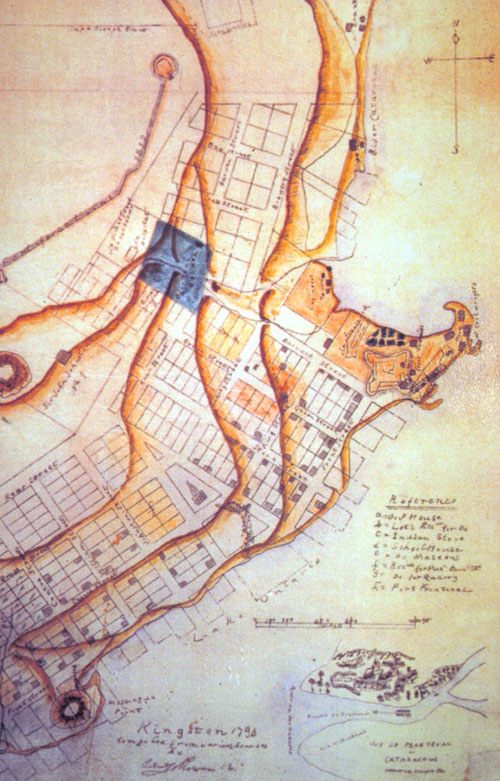The United Empire Loyalists were Americans who maintained their loyalty to the British Crown during and following the American Revolution. The majority of Loyalists who came to Canada settled in New Brunswick and Nova Scotia, with smaller numbers establishing themselves in present-day Quebec and Ontario. In 1784, a small group led by Captain Michael Grass settled at Cataraqui, forming the basis of the community that would come to be known as Kingston. Among these settlers was Molly Brant, sister of Joseph Brant and a prominent figure Kingston history. The Loyalists received generous grants of land, clothing, and tools from the British government to start a new settlement. In spite of this support they endured several years of hardship before the community became self-sufficient. Merchants in the town benefited from a commercial relationship with the military garrison stationed at Fort Frontenac. The garrison had been transferred in 1783 from Carleton Island, as the island was located within the border of the new United States of America. Under the command of Major John Ross, the garrison rebuilt the barracks at Fort Frontenac and helped the Loyalists in their resettlement.
By 1791, the Loyalists were firmly established in and around Kingston. Though their numbers were small, the Loyalists would have a profound effect on future development at Kingston. Dissatisfied with the existing French legal system and seigneurial system of land tenure, they encouraged the passage of the Constitutional Act in 1791, which created the province of Upper Canada with British common law and land tenure; their demand for education resulted in the founding of the first school in 1786 by the Reverand John Stuart.



